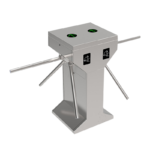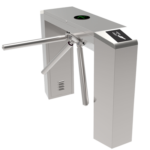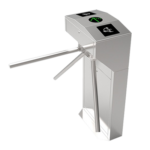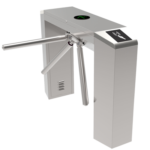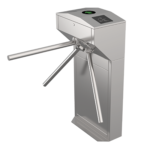A turnstile gate is a security device commonly used to control access to a restricted area or to manage the flow of people in public spaces like train stations, stadiums, amusement parks, office buildings, and more. The primary purpose of a turnstile gate is to allow only one person to pass through at a time, thereby ensuring authorized entry and preventing unauthorized access or tailgating.
Here’s an overview of how a turnstile gate for security works:
Physical barriers: Turnstile gates typically consist of rotating horizontal or vertical arms that act as physical barriers. These arms can be made of metal or other durable materials.
Entry control: Access to the secure area is granted after the verification of credentials, such as an access card, barcode ticket, biometric scan (fingerprint, facial recognition, etc.), or any other form of authentication.
One-way passage: Turnstile gates are designed to allow entry in only one direction, typically in the direction of the secured area. For example, they may allow entry from outside but prevent exit from the secure area without proper authorization.
Anti-tailgating features: Turnstile gates are equipped with sensors to detect when a person tries to pass through without proper authorization. If someone attempts to tailgate (follow closely behind an authorized person), the turnstile will not rotate, and access will be denied.
Access control integration: Turnstile gates are often integrated with access control systems or ticketing systems to manage entry permissions and track the movement of people.
Emergency egress: In case of emergencies, turnstile gates are designed to allow free passage in the opposite direction, enabling quick evacuation when needed.
Various types: Turnstile gates come in different configurations, such as tripod turnstiles (suitable for low-security areas), full-height turnstiles (for enhanced security), and optical turnstiles (using infrared beams for detection).
Benefits of using turnstile gates for security:Access control: Turnstile gates help ensure that only authorized individuals can enter the restricted area, enhancing overall security.
Crowd management: Turnstile gates effectively manage the flow of people, preventing overcrowding and maintaining orderly movement.
Deterrence: Visible turnstile gates act as a deterrent to potential unauthorized access, reducing the risk of security breaches.
Audit trail: Integration with access control systems allows for easy tracking and logging of entry and exit data, which can be useful for security audits and investigations.
Space efficiency: Turnstile gates occupy less space compared to traditional doors, making them ideal for areas with high foot traffic.
Overall, turnstile gates are an effective and widely used security solution that helps maintain a controlled and secure environment in various public and private settings.

